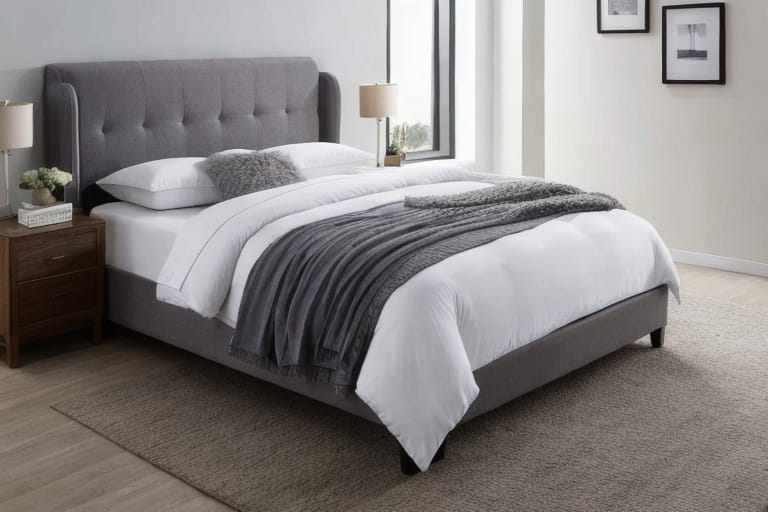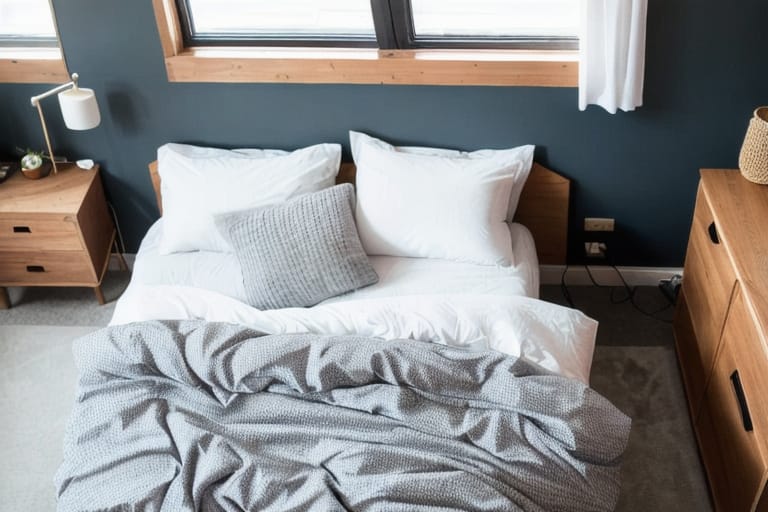Down comforters have long been beloved for their unmatched warmth, comfort, and durability compared to other types of bedding. But what exactly makes them stand out above synthetic or alternative down comforters? This beginner’s guide will explore what defines a quality down comforter, the key benefits they offer, and tips for choosing the best down comforter to suit your needs.
What Are Down Comforters?
A down comforter is a type of bedding filled with the fine, fluffy clusters and plumules that insulate birds and waterfowl. This fill material comes from geese or ducks, and is characterized by impressive warmth properties, breathability, and durability.
Unlike feather quills which provide structure to avian coats, down fill consists of the tiny strands and nodes that efficiently trap heat. This natural fill material has been used in duvets, pillows, outerwear, and bedding for centuries thanks to its unmatched ability to retain warmth even when compressed.
Benefits that Set Down Comforters Apart
Toasty Warmth and Temperature Regulation
The primary benefit of a down comforter is exceptional warmth without weight. The fluffy fill creates loft to efficiently trap body heat. The more fill power a down comforter contains, the better insulation it provides:
- 600+ fill power offers maximum warmth for cold climates
- 400-599 fill power provides year-round comfort
- Under 400 fill power works for warmer weather
Down efficiently releases moisture and perspiration to keep sleepers cozy but comfortable. The fill adjusts with your body, wrapping you in a delicate cocoon of consistent warmth all night long.
Plush Comfort You Can Feel
In addition to reliable heat retention, down comforters provide cloud-like softness and lightweight breathability. Higher fill powers mean enhanced comfort and that sinking, fluffy sensation synonymous with luxury linens.
Sleepers often compare climbing into bed with a quality down comforter like settling into a plush cloud. The delicately pillowy sensation cushions the body comfortably while blocking drafts.
Long-Lasting Durability from a Natural Material
While other natural fills like feathers or wool compress over time, down resists deformation even after years of regular use. With proper maintenance, a high fill power down comforter can last over a decade while maintaining the same magical loft and efficiency.
This long lifespan makes down bedding a worthy investment compared to cheaper synthetic options. Thanks to sizable upfront costs, down comforters offer better long-term value through their reliable performance.

Factors When Choosing a Down Comforter
From fill power to size, weight and fabric, numerous factors determine which down comforter offers the best fit:
- Intended use – All-season, winter-specific or lightweight?
- Sleep habits – Do you run hot or cold at night?
- Fill power – Measures down quality from 300-900+
- Fill weight – Amount of down inside (light, medium or heavy)
- Shell fabric – Material like cotton, microfiber or satin
- Size – Twin to king sized based on mattress dimensions
- Special coatings – Water resistant or hypoallergenic treatments
- Price – Budget-friendly to luxury with premium down
Prioritizing the warmth level you need and bed size is key. Then narrow options based on preferred shell fabric or special features like hypoallergenic properties.
How Down Comforters Compare to Other Bedding
While cotton, wool and synthetic fills have benefits, none insulate and breathe as effectively long-term as quality down:
- Synthetic comforters mimic properties of down at a lower price point but compress and degrade more rapidly. However, synthetic options are hypoallergenic.
- Wool comforters offer notable warmth and weight but wool absorbs more moisture than breathable down. Thus wool can feel overly warm for some.
- Cotton comforters affordably accentuate bedroom aesthetics and layer well over warmer bedding. However cotton itself provides minimal insulation.
For a worthwhile investment in restful sleep, down comforters provide optimal comfort and temperature regulation.
Caring for Your Down Comforter
With the proper care, a quality down comforter can last over a decade. Here are tips to maintain loft and efficiency season after season:
- Dry clean down comforters every 2-3 years to sanitize without damage
- Air out the comforter after use to release moisture
- Spot clean stains gently instead of washing frequently
- Store in a large breathable garment bag during warmer months
- Avoid excessive heat like electric blankets or harsh machine drying
As down is a natural product free of chemicals, exercise care when cleaning to avoid damaging delicate clusters.

The Bottom Line
For unrivaled softness, lightweight warmth and standout craftsmanship, down comforters outperform synthetic and alternative bedding options. As a durable investment valued for its longevity and luxury, down bedding offers exceptional comfort and temperature control night after night.
Frequently Asked Questions
What is the warmest type of down comforter filling?
Goose down offers superior insulation, durability and loft compared to duck or other down alternatives. Given most goose down offers over 600 fill power, it traps heat most efficiently for superior warmth.
How do I choose what fill power I need in a down comforter?
Those in cold climates benefit from 800-900+ fill power to retain maximum warmth, while 600-799 fill power works well for four-season use. If you live a warm climate or sleep hot, choose 400-599 fill power.
What fabric shell is best for a down comforter?
Cotton sateen or sateen cotton shells offer optimal breathability for down along with pleasing aesthetics and lightweight warmth. Other down-friendly fabrics include microfiber, nylon, Egyptian cotton and crisp percale.
How heavy should my down comforter be?
Lightweight options with under 30 oz of fill suffice in warmer climates. Choose medium-weight down comforters around 31-50 oz of fill for versatility, while heavyweight styles over 60 oz fill power keep sleepers coziest in cold weather.
How do I wash a down comforter at home?
Only wash down comforters when truly necessary using a large capacity machine. Dry thoroughly on low heat while re-fluffing every 20 minutes until fully dried to maintain loft. Consider having professionally laundered instead.
What’s the best way to store a down comforter?
During warmer months, store the comforter in a large breathable cotton garment bag. Avoid plastic containers which prevent air circulation. Store flat if possible to minimize shifting clumps.
How long does a quality down comforter last?
With proper maintenance like re-fluffing and dry cleaning every few years, a high fill power down comforter can reliably last over a decade while maintaining exceptional insulation, comfort and durability. This lifespan makes down bedding a worthy.








